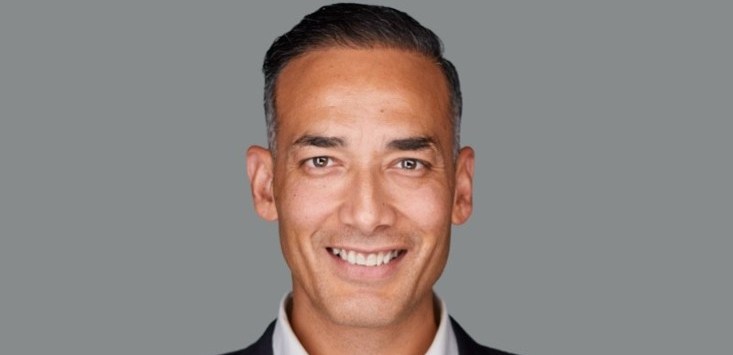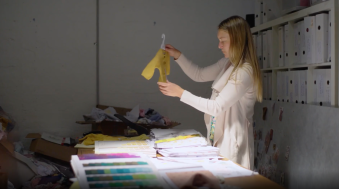
The inspiration behind Australia’s largest independent baby wear brand Purebaby is now 22 years of age, living in London and studying journalism.
This news not only confirms how far the much-loved, first-born child of its founders Mirabai Winford and Sanjay Gill has come in her life, it’s also an indicator of how well the newly-minted parents excelled on the business front as Purebaby clicks over into its third decade of growth.
Clicking is an appropriate term given the route the company has traversed since the early 2000s, its expansion from wholesale roots and brick-and-mortar stores to the digital presence it commands today.
The combination of enterprising moves and staying true to its ethos of sustainability has bode Purebaby well in a consumer climate that is almost unrecognisable since the founders began creating baby clothes because they couldn’t find what they wanted in the market.
“When we started the brand the biggest conversation used to be what is organic cotton and why should I be buying it? Now it’s everywhere but we never used it because it’s the flavour of the month, it’s part of our brand DNA,” Sanjay Gill tells SmartCompany Plus.
This authenticity and a steady, long game approach to scaling has seen Purebaby stay ahead of the pack in an industry that is synonymous with closing down sales.
“Our story is very much the same as a lot of rag trade brands, start as a wholesaler, go into retail, then go into digital. Not everyone makes that transition very smoothly but we are very proud to be in all areas now as a true omni-channel business,” Gill said.
“I won’t say that protects us completely, but it does create multiple (sales) channels for us.”
A tailored approach to a mammoth need
Maintaining all those channels stead Purebaby well, particularly through the uninvited guest for the past two years, COVID-19.
“When the pandemic hit, retail was almost non existent because of lockdowns so we saw our digital sales increase (initially from 10% to 90% before levelling to about 50%) but our B2B sales (wholesale) also increased quite significantly, up from 10% to 20%,” Gill said.
The latter included new affiliations with international stockists, the latest to join the stable of seven countries, UK department store institutions, Harrods and John Lewis.
“We’re very proud we haven’t grown our business sacrificing one channel at the expense of the other, we are maintaining them all. Obviously some channels, due to changes in consumer behaviour, are more growth orientated but at the same time we are very strong in retail as we speak,” Gill said.
“The tactile experience is still very important to our customers. ”
While Purebaby’s traditional sales channels are plugging along nicely now Australia is open for business again, its digital presence has been the blockbuster performer.
Grappling its rapid rise during lockdowns to meet the demand was something the company was prepared for, and has continue to hone.
“We started to see an uptick in our digital sales before COVID-19 and then during the pandemic it just went through the roof,” Gill said.
A large contributor to seizing that digital growth was down to Purebaby’s tailored email marketing program, a bespoke approach customised to the customer.
“I’m not a big fan of ‘batch and blast’ emails as we call it in the industry. You might have 80,000 subscribers on your list and constantly blasting them with the same message. Our platforms are powerful — but they’re only as good as the people operating them.”
That’s just one of the reasons Purebaby teamed up with marketing technology company Cheetah Digital.
“One of our conditions of partnering with Cheetah was that we needed to map the journey of our customer and then tailor the idioms to that journey,” Gill said.

Purebaby products. Source: supplied
“This starts with someone walking into store or signing up online and a series of three to four emails. This welcome journey gets people started with what is good about our brand, the different ranges we have, there’s encouragement to shop online or in-store. That’s just the beginning.”
The personalised emails arrive in customers’ inboxes at various stages of their journey — an email for every occasion if you’re a Purebaby subscriber.
“We hold the record of 28 trigger emails,” Gill said.
“We all know babies grow and no-one complains about growing babies. This starts with 000 onesie and we remind them in about two months time they need a 00 and then a zero. That’s just one of the journeys we do,” Gill said, explaining he prefers that marketing approach compared to the ‘here’s how much we’re discounting’ method.
And the EDM results speak for themselves. Purebaby’s “welcome series” yields a 50% engagement rate; the “due date” a 70% open rate with unique click through of 14%; and the “size up” series on par with the introduction EDMs at 50%.
Keeping up with the young ‘uns
Despite the success of the marketing program, there’s still always room for improvement in Gill’s mind.
In terms of customer segmentation (secondary customers like grandparents/gift givers), they could do with far more targeting.
After all “40% of our sales are gift based, which is a lot of people”, Gill explained.
He says Purebaby’s customer-mapped “tech stack” is a complex one and constantly changing but has been their best investment along with the e-commerce platforms they use.
“Shopify Plus been very good but we are kind of touching the ceiling of that platform so we need to then start to look beyond that. Having very flexible e commerce platform and having very strong relationship with a e commerce or email marketing company are two of our biggest strengths.”
As far as where to now, Giill said the coming years were very exciting for any business but you have to stay on top of things.
“My philosophy is that brands become irrelevant if if they don’t change.”
“People say retail is irrelevant but it’s only that way if you don’t keep you eye on things. Staying on top of trends is the exciting and challenging part
“A year ago may have been your SEO with Google or your SEM with Facebook but now it’s TikTok which has its own challenges. How does a serious brand take a platform of quirky videos and try and incorporate that?”
Keeping up with the TikTokers while trying to keep a foothold in a traditional retail shopping network is something that excites the CEO.
“You have to be constantly catering for your customer needs, whether that’s being gender fluid with your products or know where your customers are (hanging out),” Gill explains.
“You can’t try and engage on Facebook when they’re moved on the to the next emerging platform.
“That’s the challenge.”


COMMENTS
SmartCompany is committed to hosting lively discussions. Help us keep the conversation useful, interesting and welcoming. We aim to publish comments quickly in the interest of promoting robust conversation, but we’re a small team and we deploy filters to protect against legal risk. Occasionally your comment may be held up while it is being reviewed, but we’re working as fast as we can to keep the conversation rolling.
The SmartCompany comment section is members-only content. Please subscribe to leave a comment.
The SmartCompany comment section is members-only content. Please login to leave a comment.